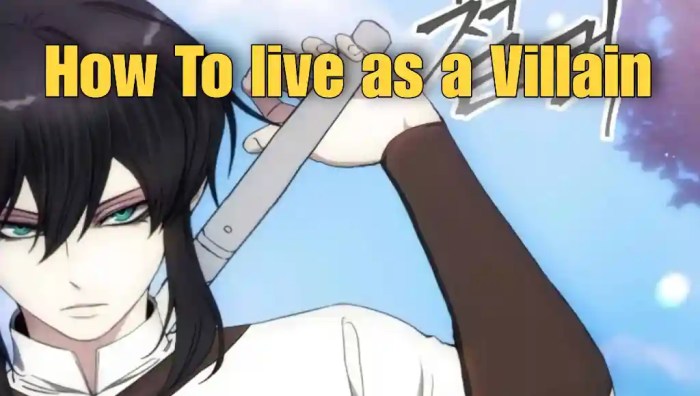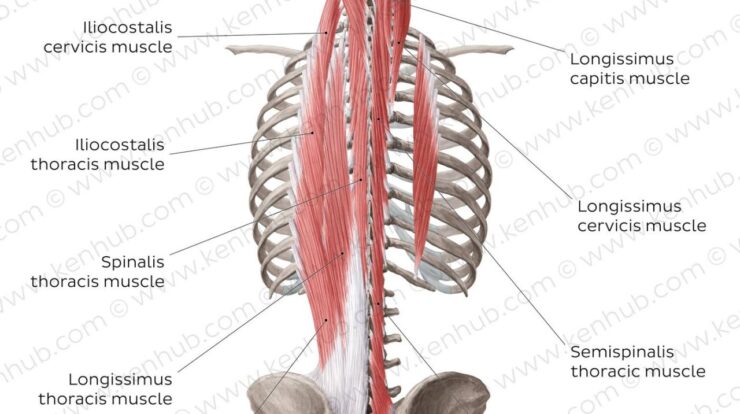
In “How to Live as a Villain Ch 94,” we delve into the captivating world of villainy, exploring the strategies, motivations, and impact of these enigmatic characters. This chapter promises to unravel the secrets of crafting compelling and believable villains, providing a comprehensive guide to their psychology, lairs, organizations, and societal influence.
As we journey through this chapter, we’ll analyze the tactics and strategies employed by iconic villains, examining the ethical implications of their actions. We’ll explore the motivations and backstories that drive these characters, delving into their psychological traits and flaws.
From elaborate lairs to powerful organizations, we’ll uncover the functional and symbolic significance of these spaces in the context of villainous activities.
Villainous Strategies and Tactics: How To Live As A Villain Ch 94
The realm of villainy is a treacherous landscape, where success demands a keen understanding of the strategies and tactics that have proven effective throughout history. Successful villains have mastered the art of deception, manipulation, and intimidation, wielding these tools to achieve their nefarious goals.
Deception
Deception is a cornerstone of villainous strategy. By creating a facade of trustworthiness or exploiting loopholes in the system, villains can gain access to sensitive information, manipulate their adversaries, and sow seeds of doubt among their enemies.
- False Identities:Creating and maintaining multiple identities allows villains to operate incognito, infiltrate enemy organizations, and escape detection.
- Disinformation:Spreading false information can confuse and demoralize opponents, creating opportunities for villains to strike.
- Smoke and Mirrors:Using illusions, distractions, and misdirection, villains can conceal their true intentions and escape from perilous situations.
Manipulation
Manipulation is another powerful tool in the villain’s arsenal. By exploiting human weaknesses and desires, villains can influence others to act in ways that benefit their own agenda.
Learning how to live as a villain in chapter 94 might seem daunting, but it’s crucial to remember that even villains need to take care of their health. If you’re facing gum disease, don’t despair; there are ways to cure gum disease without a dentist . Armed with this knowledge, you can return to your villainous pursuits with renewed confidence, knowing that your oral hygiene is in check.
- Emotional Blackmail:Threatening or exploiting the emotions of others can force them to comply with the villain’s demands.
- Gaslighting:Repeatedly denying reality or making others doubt their own sanity can erode their confidence and make them vulnerable to manipulation.
- Divide and Conquer:Sowing discord and mistrust among adversaries can weaken their unity and make them easier to defeat.
Intimidation
Intimidation is a direct and forceful approach to achieving villainous goals. By instilling fear and uncertainty, villains can deter opposition and maintain control over their territories.
- Physical Force:Violence or the threat of violence can be used to intimidate and subdue adversaries.
- Psychological Warfare:Using fear, threats, and psychological manipulation, villains can break the will of their opponents.
- Public Humiliation:Exposing the weaknesses or failures of adversaries in a public forum can damage their reputation and undermine their credibility.
Ethical Implications, How to live as a villain ch 94
The use of underhanded methods in the pursuit of villainous goals raises complex ethical questions. While some may argue that the ends justify the means, others believe that certain lines should not be crossed, even in the name of achieving one’s objectives.
If you’re looking for a quick and easy way to cure gum disease without having to go to the dentist, check out this guide . It provides step-by-step instructions on how to use natural remedies to treat gum disease effectively.
You’ll be back to enjoying a healthy smile in no time. Now, let’s get back to discussing how to live as a villain in Chapter 94.
The ethical implications of villainous strategies and tactics must be carefully considered, as the consequences of their actions can have far-reaching and devastating effects on society. It is essential to strike a balance between the pursuit of personal gain and the preservation of fundamental moral principles.
Character Development for Villains
Crafting captivating villains requires a deep understanding of their motivations, backstories, and psychological traits. By exploring iconic villains from popular culture, we can unravel the nuances that make them compelling and relatable.
Villainous Motivations and Backstories
The foundation of a believable villain lies in their motivations. Explore the events, experiences, and traumas that shape their desires and drive them towards villainy. Consider their goals, fears, and the sacrifices they’re willing to make.
Psychological Traits and Flaws
Villains often possess unique psychological traits that distinguish them from heroes. Analyze their personality disorders, mental health conditions, or cognitive biases. Explore their vulnerabilities, weaknesses, and the flaws that make them both formidable and human.
Tips for Creating Complex Villains
- Establish a Clear Motivation:Give your villain a compelling reason for their actions, ensuring it aligns with their character and backstory.
- Develop Complex Relationships:Villains should have meaningful interactions with other characters, both heroes and allies. Explore their relationships with their minions, family, and love interests.
- Create Relatable Flaws:While villains should be formidable, giving them relatable flaws makes them more sympathetic and believable. Explore their insecurities, fears, and weaknesses.
- Avoid Stereotypes:Resist the urge to create one-dimensional villains. Instead, focus on developing unique and memorable characters with depth and complexity.
Villainous Lairs and Hideouts

Villainous lairs and hideouts are essential elements of the villainous lifestyle, providing a secure and often secret base of operations. These spaces are often elaborate and meticulously designed, reflecting the villain’s personality, motivations, and modus operandi.
Beyond their functional significance, villainous lairs also serve as powerful symbols of the villain’s power and influence. They are often designed to intimidate and inspire fear in their enemies, while also providing a sense of comfort and security to the villain themselves.
The villain in “How to Live as a Villain Ch 94” has some nasty dental hygiene. He needs to learn how to cure gum disease without a dentist before he starts losing teeth. Then he can get back to his villainous ways.
Design and Aesthetics
The design of a villainous lair is often influenced by the villain’s personality and aesthetic preferences. Some villains favor dark and brooding spaces, while others prefer more opulent and glamorous settings. The lair’s design may also reflect the villain’s motivations and goals, such as a mad scientist’s laboratory or a criminal mastermind’s control room.
The aesthetic elements of the lair play a significant role in creating an immersive and memorable environment. Lighting, sound effects, and even scents can be used to enhance the atmosphere and convey the villain’s personality. For example, a villain who relies on fear and intimidation may use dim lighting and ominous sound effects to create a sense of unease in their lair.
Technology and Security
Technology plays a vital role in the design and security of villainous lairs. Advanced surveillance systems, biometric locks, and even AI-powered defenses are often employed to protect the lair from intruders. The villain may also use technology to monitor their enemies, gather intelligence, and control their operations remotely.
The security measures employed in the lair reflect the villain’s level of paranoia and the importance of the lair to their operations. Some villains may have multiple layers of security, including physical barriers, electronic surveillance, and even armed guards. Others may rely on more subtle measures, such as hidden entrances and escape routes.
Functionality and Symbolism
In addition to their aesthetic and security features, villainous lairs also serve important functional purposes. They may include laboratories for conducting experiments, workshops for building weapons and gadgets, and living quarters for the villain and their minions.
The layout and design of the lair can also convey symbolic meanings. For example, a villain who values hierarchy and control may have a lair with a clear central command center, while a villain who is more chaotic and unpredictable may have a lair with a labyrinthine layout.
Villainous Organizations and Alliances

Within the shadowy underworld, villainous organizations and alliances thrive, pooling their resources and malevolent ambitions to reshape the world in their image. These organizations vary widely in structure, hierarchy, and operations, each driven by unique motivations and goals.
At the apex of these organizations often resides a charismatic and ruthless leader, commanding unwavering loyalty from their followers. Below them, a hierarchy of lieutenants and enforcers carry out their orders, each with their own agendas and aspirations.
Structure and Hierarchy
- Centralized Command:A single leader holds absolute power, with subordinates reporting directly to them.
- Decentralized Structure:Power is distributed among several key figures, each responsible for specific operations or territories.
- Loose Alliances:Groups of villains collaborate on specific projects or goals, maintaining their own autonomy while sharing resources.
Motivations and Goals
- Domination and Power:The desire to control vast territories, manipulate events, and reshape society according to their whims.
- Wealth and Resources:The accumulation of vast wealth through criminal activities, extortion, or theft.
- Revenge and Retribution:The pursuit of vengeance against perceived enemies or societal injustices.
- Chaos and Anarchy:The belief that order and stability are inherently oppressive, and that chaos is the true path to freedom.
Methods and Tactics
- Intimidation and Violence:Using fear and brute force to control populations and eliminate opposition.
- Manipulation and Deception:Employing cunning and deceit to deceive enemies, gain influence, and achieve their goals.
- Technological Advancements:Utilizing cutting-edge technology to enhance their power and capabilities.
- Psychological Warfare:Undermining the morale and resolve of opponents through fear, doubt, and propaganda.
Dynamics and Conflict
- Internal Rivalries:Ambitious villains within the organization may compete for power or resources, leading to internal conflicts.
- Betrayal and Treachery:Loyalty is a rare commodity among villains, and betrayals can occur at any moment.
- Power Struggles:As leaders age or weaken, power struggles may erupt among their subordinates.
Villainous Impact on Society
Villains exert a profound influence on the societies they inhabit. Their actions can create widespread fear, chaos, and disruption, but they can also inspire social change and introspection.
One of the most significant impacts of villains is the fear they instill in the hearts of citizens. The threat of violence, destruction, or chaos can paralyze communities and make people afraid to go about their daily lives. This fear can lead to a loss of trust in authority and a sense of helplessness among the population.
In addition to fear, villains can also cause widespread chaos and disruption. Their actions can damage infrastructure, disrupt supply chains, and even lead to loss of life. This chaos can make it difficult for people to live their lives normally and can create a sense of instability and uncertainty.
However, villains can also have a positive impact on society. Their actions can sometimes inspire people to take action and make a difference in the world. For example, the actions of a villain might inspire people to volunteer for a cause or to get involved in politics.
Villains can also serve as a reminder of the importance of justice and the need to fight for what is right.
The impact of villains on society is complex and multifaceted. They can create fear, chaos, and disruption, but they can also inspire social change and introspection. The role of heroes and other societal forces is to combat villains and mitigate their destructive effects, while also recognizing the potential for villains to inspire positive change.
Heroes and Other Societal Forces
Heroes and other societal forces play a vital role in combating villains and mitigating their destructive effects. Heroes are individuals who use their powers or abilities to fight evil and protect the innocent. They can inspire people to be brave and to stand up for what is right.
Other societal forces that can help to combat villains include law enforcement, the military, and community organizations. Law enforcement can apprehend villains and bring them to justice. The military can protect the country from invasion or other threats. Community organizations can provide support and assistance to victims of crime and help to rebuild communities that have been damaged by villains.
The combined efforts of heroes and other societal forces can help to reduce the impact of villains on society. They can apprehend villains, prevent them from carrying out their plans, and help to rebuild communities that have been damaged by their actions.
Final Thoughts

In conclusion, “How to Live as a Villain Ch 94” offers a comprehensive and engaging exploration of the multifaceted world of villainy. Through an in-depth examination of strategies, character development, lairs, organizations, and societal impact, this chapter provides valuable insights into the creation and portrayal of compelling villains.
Whether you’re a writer, storyteller, or simply fascinated by the psychology of evil, this chapter will leave you with a deeper understanding and appreciation for the art of villainy.
Frequently Asked Questions
What are some common strategies employed by villains?
Villains often rely on deception, manipulation, and intimidation to achieve their goals.
What are the key psychological traits of compelling villains?
Compelling villains often possess a combination of intelligence, charisma, and ruthlessness.
How do villainous lairs and hideouts contribute to the narrative?
Villainous lairs and hideouts provide a physical representation of the villain’s power and secrecy.
What is the role of villainous organizations in shaping the story?
Villainous organizations can provide a sense of structure and hierarchy, as well as opportunities for conflict and betrayal.
How do villains impact the societies they inhabit?
Villains can create fear, chaos, and disruption, but they can also inspire social change and introspection.





